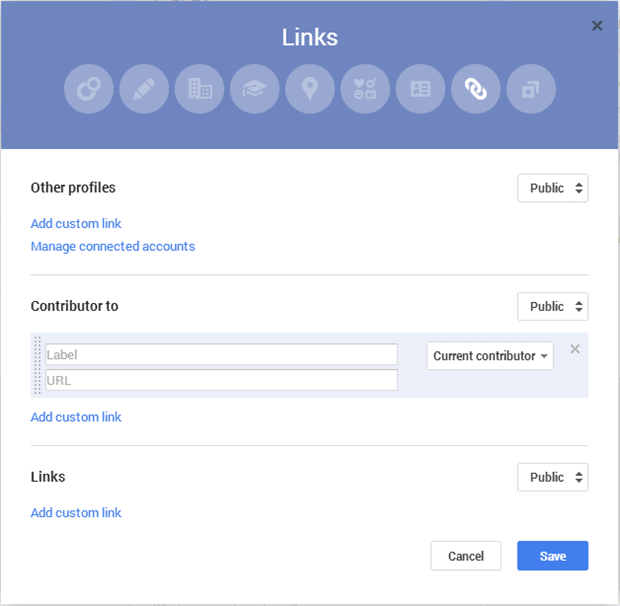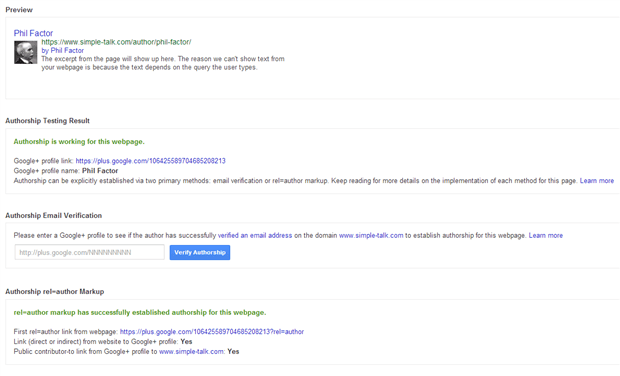What is Google authorship?
Google introduced ‘authorship’ in the summer of 2011. Google ‘authorship’ allows authors to link content to their Google + profile. This allows authors to identify themselves as authorities in specific areas and to get extra visibility for their content. Setting up authorship, when done correctly, can lead to Google presenting the author’s picture next to search results, such as in the example below for Google’s Matt Cutts:

What are the benefits of using Google authorship tags?
Google authorship can have the following benefits:
– Extra visibility in the search results.
– Can also improve the percentage of users that click on the search result.
– Many people have speculated that Google has / or may introduce an ‘author rank’ to use as a factor in how they rank content. This would be a measure of an author’s ‘authority’ based on the content that they have produced. Many believe that this has already happened or will happen in the future. Authors who use Google authorship are preparing themselves for this eventuality.
– You can link content that you have produced from multiple websites to your Google + profile. All this content will be associated with your central Google + author profile.
First steps…
Make sure that you have a Google + Profile
You need to have a profile setup on Google + for authorship to work.
Complete Google + Profile sections on employment, occupation etc (optional)
There is evidence to suggest that the more complete an individual’s Google + profile is, the more trusted they are by Google. It is recommended that you provide as much information as you feel comfortable with, but completing the employment and occupation sections would be a good place to start.
Make sure that your picture is of you!
You should make sure that you upload a profile picture and that this picture is of you. Google wants to associate the profiles of authors with real people. Google disapproves of fake personas or avatars such as cartoon characters. Google wants personal Google + accounts to be associated with actual individuals. The profile picture should not contain anything offensive.
Make sure that your Google + profile picture is the right size
Make sure that your profile picture clearly shows a front view of your whole face. Google wants to make sure that an author is clearly identifiable.
Make sure that your Google authorship profile is public
There is an option to make a Google plus account private, but a profile must be public in order to show authorship information.
How do I setup Google authorship tags?
There are several methods that you can use to connect your content to your Google + profile:
Method One – Register a Simple Talk email address with Google
Make sure that you have an email address on the same domain as your content. First, this email must be registered with Google. We can then change the author byline on each content page to link to this email address. Google can then make the connection between your Google + profile and Simple Talk.
Method Two – Link Simpletalk.com to your Google + profile
It is also possible to register yourself as a Simple Talk content contributor on Google +. Go to your main profile page on Google +. Then go to the links section and select ‘edit’. In the ‘contributor to’ section, type in http://www.simple-talk.com as the URL and then add an appropriate label e.g. “Simple Talk”. Click Save. Simple Talk will then be added as a domain that you contribute content to.

We will then make the changes on Simple Talk to ensure that your content points to your Google + profile.
Ensure that an authorship snippet is working by using Google’s ‘structured data tool’:
You can use Google’s structured data tool to check whether the connection to Simple Talk is working. First, login to your Google + profile and then click this link.

Enter the URL of your Simple Talk author page above and click preview. The tool will then give you information on whether your Google + account has been linked successfully to your content. Here is what Google tells us about Phil Factor’s authorship pages: In the case of Phil Factor above authorship is working correctly. Phil has made a public ‘contributor-to’ link from his Google + page to Simple Talk, and his author profile has been amended on Simple Talk to connect to his Google profile. If you search for Phil Factor in Google, you will see his picture appear next to his content.
In the case of Phil Factor above authorship is working correctly. Phil has made a public ‘contributor-to’ link from his Google + page to Simple Talk, and his author profile has been amended on Simple Talk to connect to his Google profile. If you search for Phil Factor in Google, you will see his picture appear next to his content.
Other tips…
Make sure that your name in the byline of your content exactly matches your Google + profile name
The names on your Simple Talk content and on the Google + profile must match exactly, otherwise Google will not be able to connect the two.
You can’t link multiple authors to a piece of content
There is currently no way to link multiple authors to a piece of content. This means that authorship tags are not suitable for content that has been co-authored. Google is working on a way to fix this.
Only use authorship tags for content
Google want to use authorship to help identify authoritative content. Some webmasters have started to link non-content pages, such as product page listings. Only use authorship tags for content. Linking to product pages does not make sense as they do not have an ‘author’ in the same way. It is possible that Google will penalise people who do this in the future.
Authorship is not the same thing as author rank
There has been much discussion amongst webmasters about Google authorship and ‘author rank’ and whether these are the same. They are not the same. Google authorship is where an author chooses to link their content to their Google + profile. Many people think that Google will use this data to start to rank content in their search engine results via an ‘author rank’ algorithm, which would assign an authority value to authors based on their content. Google could then use this metric as a ranking factor in their search results.
And finally…
Something that you may want to mention / bear in mind
Google does not guarantee that it will display authorship information in the search results. It can also take several weeks for Google to start displaying this information, so be patient Google have also announced recently that they will be slightly reducing the amount of authorship information they display in the search results, reducing the amount of results from non-authoritative authors. This has confirmed that Google is interested in displaying authorship snippets for quality content.
Other sources of information
Rick DeJarnette, The Definitive Guide to Google Authorship Markup
Danny Sullivan, Google Provides FAQ about authorship, From Blocking to No Mascots
Janet Driscoll Miller, Infographic: How to Troubleshoot Google Authorship Issues, A Step-By-Step Flowchart
Grant Draper, How to set up Google Authorship
Barry Schwartz, SEOs Get Ready for 15% Reduction in Google Rich Snippets
Other tips…probably not relevant to this blog post:
Only have one Google + profile…
Some people decide to have a different a Google Plus profile for every language that they post in, but Google does not approve of this.



Load comments